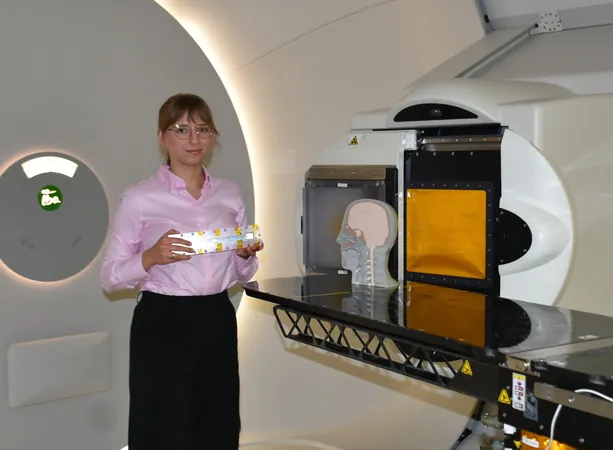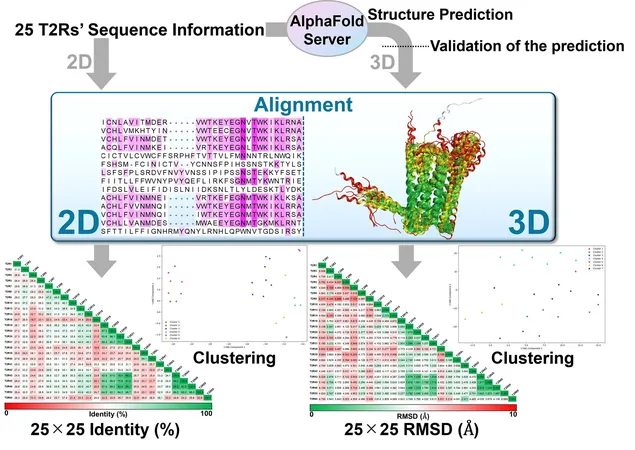
Revolutionizing Cancer Treatment: How Polish Researchers Are Enhancing Existing Radiotherapy Techniques
2025-07-18
Author: Yu
Transforming Cancer Care with Existing Technology
In a groundbreaking advancement, researchers from the Institute of Nuclear Physics in Krakow, Poland, are on the brink of revolutionizing cancer treatment without the need for expensive new machinery. Their latest study, published in *Physics in Medicine & Biology*, emphasizes the significance of integrating the quality of proton beams into radiotherapy planning.
Cost-Effective Solutions for Enhanced Treatment
Traditionally, improving cancer treatment has required hefty investments in state-of-the-art irradiation systems, often costing millions. However, this innovative research reveals that utilizing existing medical equipment in a smarter way can lead to more effective and safer cancer therapies at a fraction of the cost.
Understanding Proton Therapy vs. Traditional Methods
Currently, the majority of patients receive photon therapy, while only a limited number can access proton therapy, known for its precision in targeting cancer cells while sparing healthy tissue. A crucial factor in this is how radiation interacts with cellular DNA—cancer cells are generally more vulnerable to radiation compared to their healthy counterparts.
The Importance of Beam Quality in Treatment
A key to successful radiotherapy is how the therapeutic beam is delivered. Ensuring that radiation primarily affects the tumor while protecting surrounding healthy tissue is vital. If not executed correctly, treating the tumor can unintentionally harm nearby normal cells, leading to severe complications.
Innovative Planning and Measurement Techniques
Before treatment, physicians meticulously map out the therapy using sophisticated software, determining critical parameters like irradiation angles and particle energy. However, specifying how the radiation dose will be delivered requires rigorous measurements—a challenge that the current methods of photon therapy manage effectively but which proton therapy lacks.
Introducing Linear Energy Transfer (LET) into Therapy Planning
The innovative team emphasizes a previously underutilized metric in therapy planning: the Linear Energy Transfer (LET). LET gives insight into how much energy the particles emit as they traverse tissue, a crucial factor that influences biological effects during treatment.
How the Timepix3 Detector is Changing the Game
By employing the commercial Timepix3 detector, researchers have devised a way to measure the LET parameter effectively during clinical treatments. This detector, developed through collaboration at CERN, allows for the tracking of individual protons and quantifying their LET, making it a game-changer for verifying the quality of proton beams.
The Road Ahead for Proton Therapy
While the research holds immense promise, some technical challenges must be resolved before the method can be widely adopted. Current medical cyclotrons generate high-intensity beams, while the Timepix measurements require lower intensity. However, researchers believe that software updates from cyclotron manufacturers can bridge this gap.
A Future of Improved Cancer Therapy Awaits
Dr. Antoni Ruciński of IFJ PAN highlights that this newly developed method could enhance the efficacy and safety of modern proton therapy, paving the way for the use of more advanced ion therapies involving helium, carbon, or oxygen beams. This monumental step promises to propel cancer treatments into a new era of precision and care, potentially saving countless lives.




 Brasil (PT)
Brasil (PT)
 Canada (EN)
Canada (EN)
 Chile (ES)
Chile (ES)
 Česko (CS)
Česko (CS)
 대한민국 (KO)
대한민국 (KO)
 España (ES)
España (ES)
 France (FR)
France (FR)
 Hong Kong (EN)
Hong Kong (EN)
 Italia (IT)
Italia (IT)
 日本 (JA)
日本 (JA)
 Magyarország (HU)
Magyarország (HU)
 Norge (NO)
Norge (NO)
 Polska (PL)
Polska (PL)
 Schweiz (DE)
Schweiz (DE)
 Singapore (EN)
Singapore (EN)
 Sverige (SV)
Sverige (SV)
 Suomi (FI)
Suomi (FI)
 Türkiye (TR)
Türkiye (TR)
 الإمارات العربية المتحدة (AR)
الإمارات العربية المتحدة (AR)